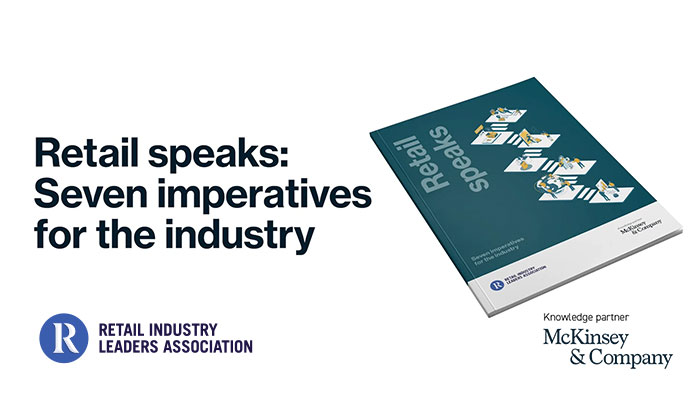COVID-19 FAQ on Sanitation/Disinfectant – Products
For Sale and Store-Use
As retailers work through the challenges and opportunities presented by the COVID-19 pandemic, many questions may arise about best practices and thoughtfully conducting business and associated compliance activities. These FAQs are intended to help you think through some issues and considerations during these changing times. As conditions change, topics will be updated and/or new topics will be added to provide information, best practices and suggestions in this unprecedented time. Sanitation and disinfectant products for sale and in-store use are an important part of retail operations during this crisis.
The questions in this section explore some considerations related to sanitization and disinfectant products that might be new to your business or used, managed and sold in greater quantities.
Frequently Asked Questions
- We are introducing new disinfectant and sanitization products both as merchandise for sale and for in-store use. What should we be doing in addition to our normal onboarding process?
- What are the hazardous waste management implications for new sanitization/disinfectant products, related to spills or damages?
- What about new disinfectant and sanitization products used by our current or new cleaning service provider? What should we do?
We are introducing new disinfectant and sanitization products both as merchandise for sale and for in-store use. What should we be doing in addition to our normal onboarding process?
Many commercial sanitization and disinfectant products are highly corrosive, such those with quaternary ammonium, sodium hypochlorite, sodium hydroxide, octatonic acid and other strong acids and bases. They should only be used according to the manufacturers’ direction and NEVER mixed with other cleaners. Those containing alcohols, such as ethanol or isopropyl alcohol, and peroxides can be highly flammable. Even in the rush to respond to in-store and customer needs, it is important to think through the safety and environmental considerations around introducing new chemicals into your inventories and operations.
To comply with OSHA’s Hazard Communications standard (HAZCOM), make sure:
- Safety Data Sheets (SDS) for new products have been obtained.
- SDSs for existing products are up to date. Do they meet GHS requirements? If they are older than June 15, 2016, probably not.
- Make the SDSs available and accessible to all employees who might use or be exposed to the cleaners in the course of their job duties. Frequent surface cleaning at check stands, entryways, carts and bathrooms, may dramatically increase the numbers of employees/positions who work with and are therefore potentially exposed to the new chemicals. Are they aware of how to access SDSs for the chemicals?
To ensure proper use of the new products, make sure:
- Employees are trained on how to properly use (mix/dilute) products and on any required protective equipment (gloves, eye protection)
- Employees know how to handle empty containers
To minimize waste related to disinfectant and sanitization products, make sure:
-
Employees know how to properly dispose of residual cleaning supplies – encourage use of all the product including rinsing the empty container with water and then adding the rinsate to the cleaning solution and using it!
What are the hazardous waste management implications for new sanitization/disinfectant products, related to spills or damages?
To properly manage waste that might result from these products, from for example a spill or damaged container, make sure:
- You have created a waste profile for the products and informed your waste disposal vendor that you could be generating the new waste streams.
- Your Hazardous Waste Program accommodates the waste with:
- Your hazardous waste SOPs, posters, signage and other job aids adequately address the disinfectant and sanitization products. If not, you probably can’t revise them in a timely way during this crisis, but can you send supplemental materials?
What about new disinfectant and sanitization products used by our current or new cleaning service provider? What should we do?
While the responsibility for the vendor’s employees is primarily their responsibility, they are working on your premises. Moreover, improper handling of harsh, dangerous or toxic chemicals by the cleaning service with could affect the health and safety of your employees. Additionally, if the service provider improperly disposes of damaged disinfectant product or containers that are not “RCRA-empty” and put them in your store’s regular trash, the improper waste disposal is your problem. You should make an effort to understand the procedures/policies of cleaning vendors by asking:
- How are employees trained on use of Personal Protective Equipment (PPE), cleaning equipment and cleaning chemicals?
- How will cleaning materials be managed?
- Are any cleaning products hazardous materials that may become hazardous waste if requiring disposal?
- Who is responsible for waste identification and disposal?
- How are empty containers handled?
This content is provided by Pat Perry and John Storlie. Pat and John are consultants specializing in environmental compliance for retailers. John is a Principal Scientist at Retail Environmental SolutionsTM, a Division of The OS Group, LLC. Pat is a Principal Scientist at Oak Creek Associates.
John Storlie, PG | The OS Group, LLC │ Direct: 608 433 9389 | john.storlie@theOSgrp.com │ www.theOSgrp.com
Pat Perry | Oak Creek Associates | Direct: 612.210.7176 | pat.perry@oakcreekmn.com
-----
Date Last Updated: March 24th, 2020
The information and content provided herein regarding COVID-19 (the “Materials”) are being distributed for general informational only and RILA, by means of its distribution of the Materials, is not rendering legal or professional advice or services. The Materials are not intended to be an exhaustive explanation of this topic and RILA makes no representation or warranty as to the accuracy of the Materials. Prior to taking any action in reliance of Materials that may affect your business, you should consult a qualified professional advisor. RILA shall not be responsible for any loss or damages from reliance or use of these Materials.

